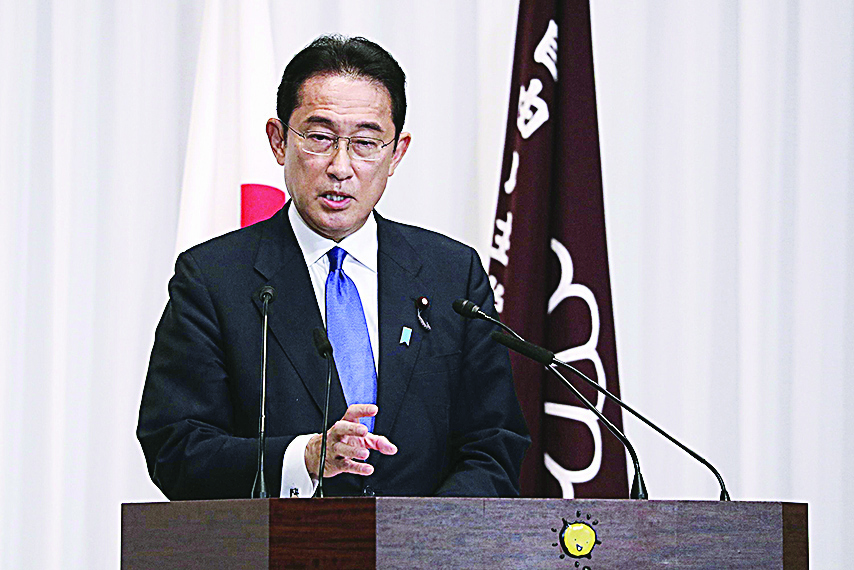TOKYO: Japanese Prime Minister Fumio Kishida has tested positive for COVID-19, his office said Sunday, a week before the leader was expected to attend an African development conference in Tunisia. Kishida took a PCR test "after experiencing a mild temperature and a cough" from Saturday evening, an official from the Prime Minister's Office of Japan told AFP. Reports in local media including public broadcaster NHK said he may now attend the August 27-28 Tokyo International Conference on African Development (TICAD) remotely.
Japan has logged record COVID-19 cases in recent days, although its total death toll from the disease is far lower than many other countries, at 36,780. The 65-year-old Kishida, who took office in October, had his fourth vaccine shot earlier this month.
He has been on holiday with his family and was due to return to work on Monday. Japan has never imposed a strict lockdown, and anti-infection measures mainly targeting bar and restaurant opening hours were lifted in March across the country. The nation's borders have partially reopened although tourists are still banned unless they are on organised group trips. Tokyo has partnered with African countries since 1993 to hold TICAD around every five years.
At the upcoming meeting, Japan will strongly support "African-led development" with a focus on economy, society, and peace and stability, a Japanese foreign ministry briefing document said. Japan would also contribute to enhancing food security in Africa to address the food crisis which had worsened due to the situation in Ukraine, the document said.
Meanwhile, Japan is considering the deployment of more than 1,000 long-range cruise missiles to increase its ability to counter growing regional threats from China, local newspaper Yomiuri Shimbun reported on Sunday.
The country plans to upgrade its existing surface-to-ship missiles to extend their range from 100 kilometres (62 miles) to about 1,000 kilometres (620 miles), which would be enough to reach Chinese coastal areas as well as North Korea, the newspaper reported, citing unnamed sources.
Upgrades would also need to be made to allow Japan's existing ships and aircraft to be able to fire the new missiles, which could hit land-based targets, the newspaper reported. The missiles would be deployed in and around the southwestern Kyushu region and on the small islands that dot Japan's southwestern waters near Taiwan, Yomiuri reported.
Japanese officials could not immediately be reached for comment on the issue. The plan is part of Japan's attempt to narrow the missile capacity gap with China, while also addressing threats from North Korea, the newspaper said.
Japan's military is not officially recognised under the country's post-war constitution and defence spending is limited to funding nominally defensive capabilities. Recent geopolitical tensions, including Russia's invasion of Ukraine and China's increasingly aggressive stance over Taiwan, have prompted growing calls in Japan to review defence programmes.
Japanese Prime Minister Fumio Kishida has vowed to significantly boost defence spending, which has been kept close to around one percent of GDP. Local media also reported that Japan's defence ministry is likely to request 5.5 trillion yen ($40.2 billion) for the next fiscal year, up slightly from the 5.18 trillion requested for the current fiscal year. But the ministry was also expected to ask approval for a list of unpriced items, including the development cost to upgrade the long-range cruise missiles, the Asahi Shimbun newspaper said. - AFP










